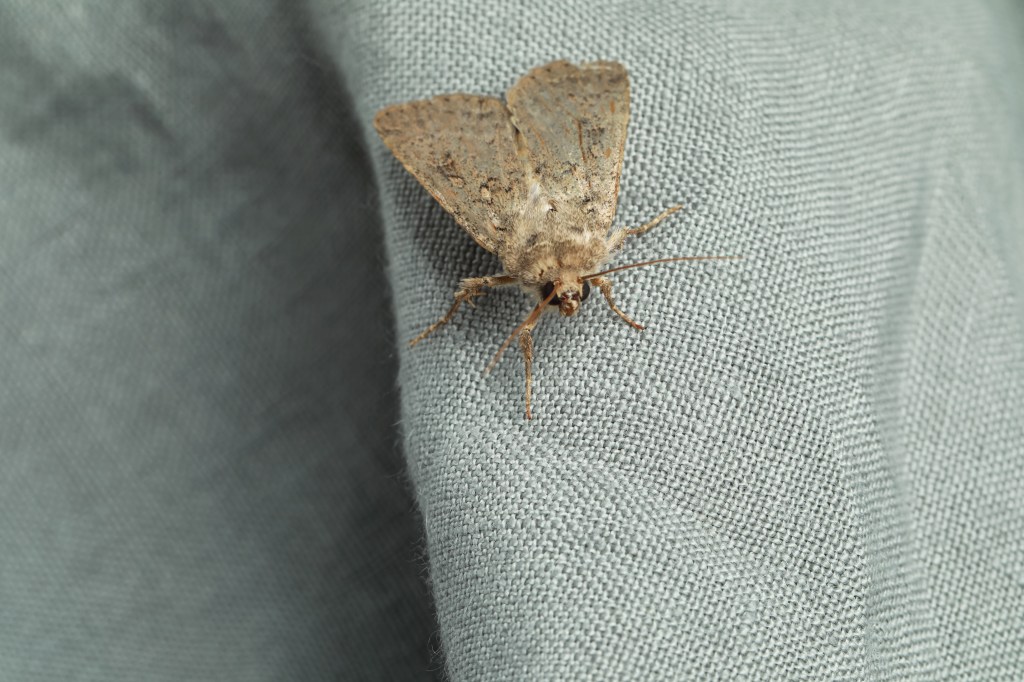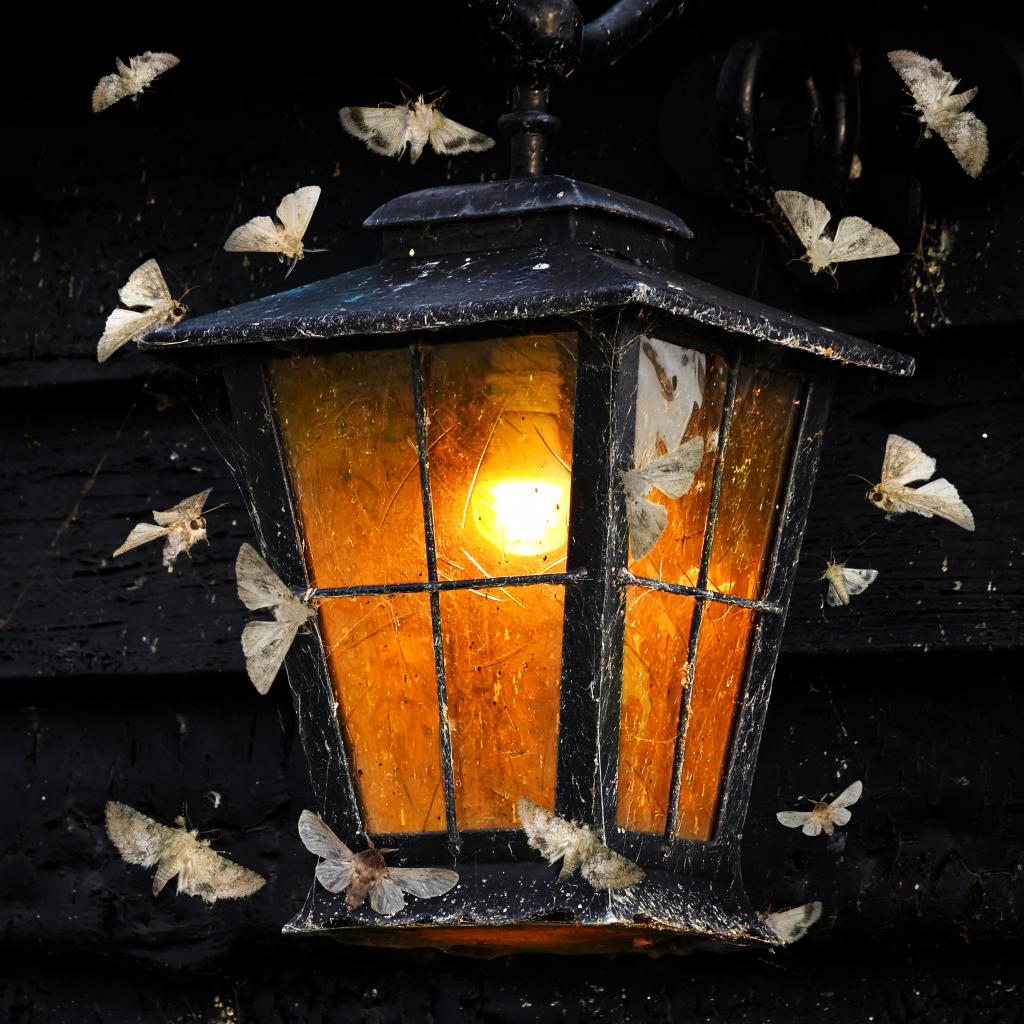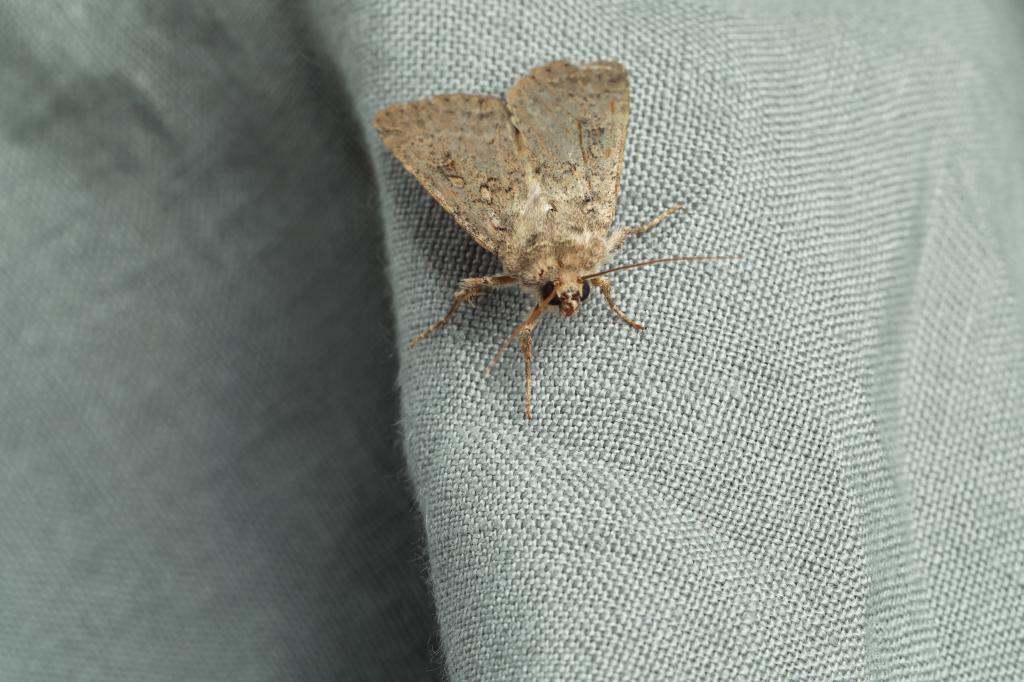Long-held belief that bugs are attracted to light disproved in new study
Drawn like a month to a flame — or not?
A new study has seemingly made the idiom obsolete, disproving the long-held belief — dating back to the Roman Empire around 1 AD — that flying bugs are attracted to light.
Instead, many insects do not fly directly to a light source and are actually turning their backs to the light when they flutter around outdoor lanterns, lampposts, and porch lights at night, the study published last week in Nature Communications states.
But another saying could be applicable to describe the behavior of winged bugs around a light. They don’t know their up from down when in the presence of artificial lighting, the Jan. 30 study found.
The team of international researchers believes that the lights turned on by humans confuse the insects who typically use the brightest thing they detect — the sky — to determine what’s up and what’s down while in flight.
The scientists think that the insects mistake artificial lights for the sky, which is why they turn their backs — or the tops of their bodies — towards light sources, trapping them in an “exhausting cycle” to get reoriented in space, according to a new release accompanying the study.
The study authors recorded the movements of 11 different insect orders with high-speed motion-capture cameras — first in a controlled lab experiment and then in the Costa Rican cloud forest, home to a diverse ecosystem of insect species.
“On one of the very first experiments, I let a large yellow underwing moth take off from my hand and fly directly over the UV bulb, and it immediately flipped upside down,” said one of the researchers, Yash Sondhi, a postdoctoral researcher at the Florida Museum of Natural History. “But we didn’t know then if the behavior we saw and measured in the lab would also be seen in the wild.”
The researchers recorded more than 477 videos and used computer vision tools to reconstruct the flight paths of their bug test subjects in 3D modeling. Nearly all the insects they recorded turned their backs to the light source.
“You watch the videos in slow motion and see it happening again and again,” report author Sondhi said in the new release published by the Florida Museum. “Maybe when people notice it, like around their porchlights or a streetlamp, it looks like they are flying straight at it, but that’s not the case.”
The scientists observed three different patterns of movements among the moths, butterflies, bees, wasps, dragonflies and more they filmed — orbiting the light source, stalling — characterized by a steep climb — and inverting.
The most extreme, inverting happens when an insect flies directly over a light causing it to completely flip upside down and often crash to the ground.
“This has been a prehistorical question. In the earliest writings, people were noticing this around fire,” report author and Florida International University associate professor of biology Jamie Theobald said. “It turns out all our speculations about why it happens have been wrong, so this is definitely the coolest project I’ve been part of.”













